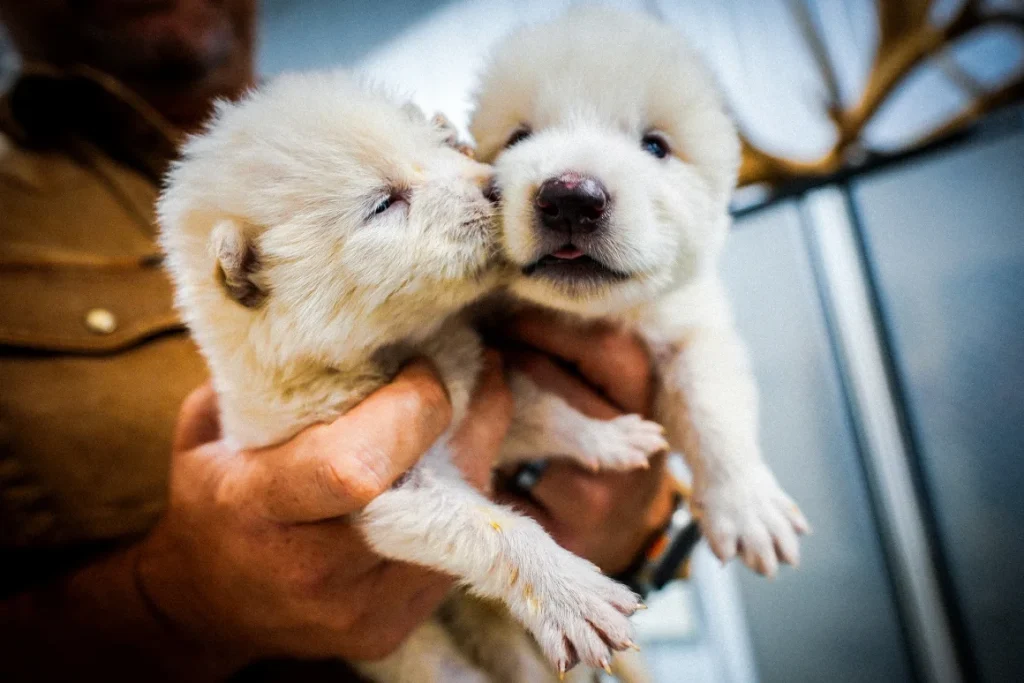April 8, 2025 – For the first time in over 10,000 years, the howl of a dire wolf echoes again. On April 7, 2025, Colossal Biosciences announced the successful de-extinction of the dire wolf, unveiling two pups, Romulus and Remus, born on October 1, 2024. Using CRISPR technology and ancient DNA, the biotech company has achieved what many thought impossible, but the breakthrough has ignited a fierce debate over the ethics and science of de-extinction.
The dire wolf, a prehistoric predator extinct for over 12,500 years, was brought back using DNA extracted from fossils dating back 11,500 and 72,000 years, as detailed in a USA Today report on the de-extinction. Colossal Biosciences, valued at $10 billion and backed by investors like Peter Jackson and Paris Hilton, edited the DNA of gray wolves to resemble the extinct dire wolf, implanting the embryos into surrogate domestic dogs, as explained in a Bloomberg article on the project. The result: Romulus and Remus, now six months old, weighing 80 pounds each and on track to reach 140 pounds, as reported in an ABC News feature on the dire wolf pups.

Colossal’s CEO, Ben Lamm, hailed the achievement as a “revolutionary milestone,” stating, “We took DNA from a 13,000-year-old tooth and a 72,000-year-old skull and made healthy dire wolf puppies,” as quoted in a CNN report on the breakthrough. The company shared a video on X of the pups howling—the first dire wolf howl in over 10,000 years—captivating audiences worldwide (Colossal X post). A third pup, a female named Khaleesi, was born in early 2025, adding to the litter of de-extinct dire wolves, per the Bloomberg report.
However, the scientific community remains divided. Some experts argue that these pups are not true dire wolves but rather genetically modified gray wolves designed to mimic the extinct species, as highlighted in a ScienceAlert analysis of the project. “I don’t think they are actually dire wolves,” said Julie Meachen, a paleontologist working on dire wolf research, in an ABC News interview. Colossal’s Beth Shapiro countered, “If it looks like that species, acts like that species, and fills the role of that species, then you’ve done it,” as quoted in the same ABC News report.
Ethical concerns are also mounting. Critics worry about the ecological impact of reintroducing a species absent for millennia, questioning whether modern ecosystems can support dire wolves, as discussed in a New York Times article on the ethical debate. Dr. Robert Klitzman, a bioethicist at Columbia University, cautioned, “There may be things we don’t understand when mucking around with genes,” in the ABC News report. Colossal plans to house the pups in a private preserve certified by the American Humane Society, with long-term goals to reintroduce them to secure ecological preserves, potentially on indigenous land, per the CNN report.
Colossal Biosciences, based in Dallas, is also working on de-extincting the woolly mammoth and the dodo, with the mammoth project targeting a 2028 revival, as noted in the Bloomberg article. The dire wolf de-extinction aligns with broader biotech trends, such as CRISPR advancements in gene editing and AI-driven conservation efforts. In tech hubs like San Francisco and Seattle, where 65% of professionals follow science news (2024 Gartner survey), the news has sparked excitement and debate, reflecting the growing intersection of technology and conservation. For more on scientific innovation, check out our coverage of space tech advancements.







